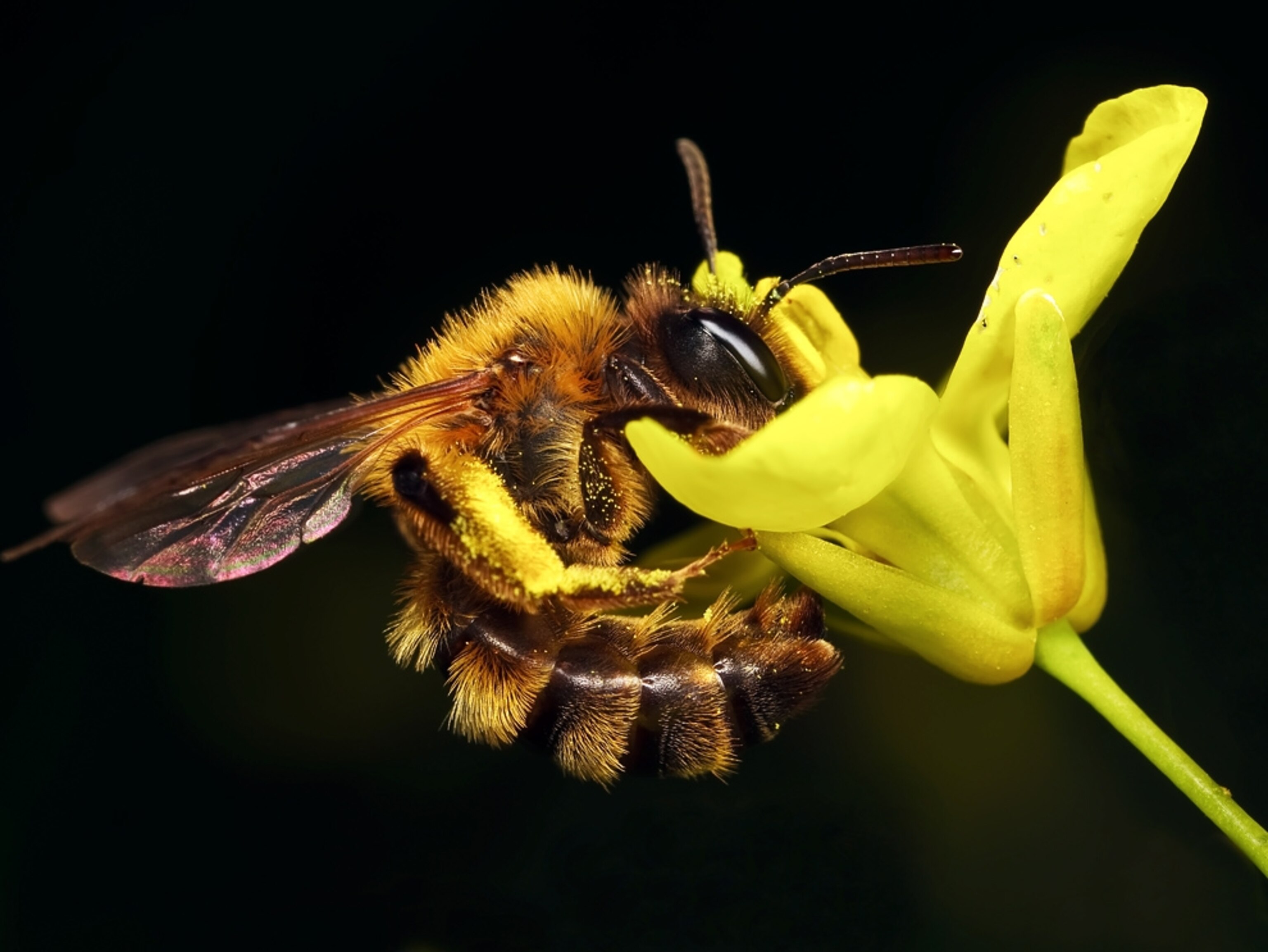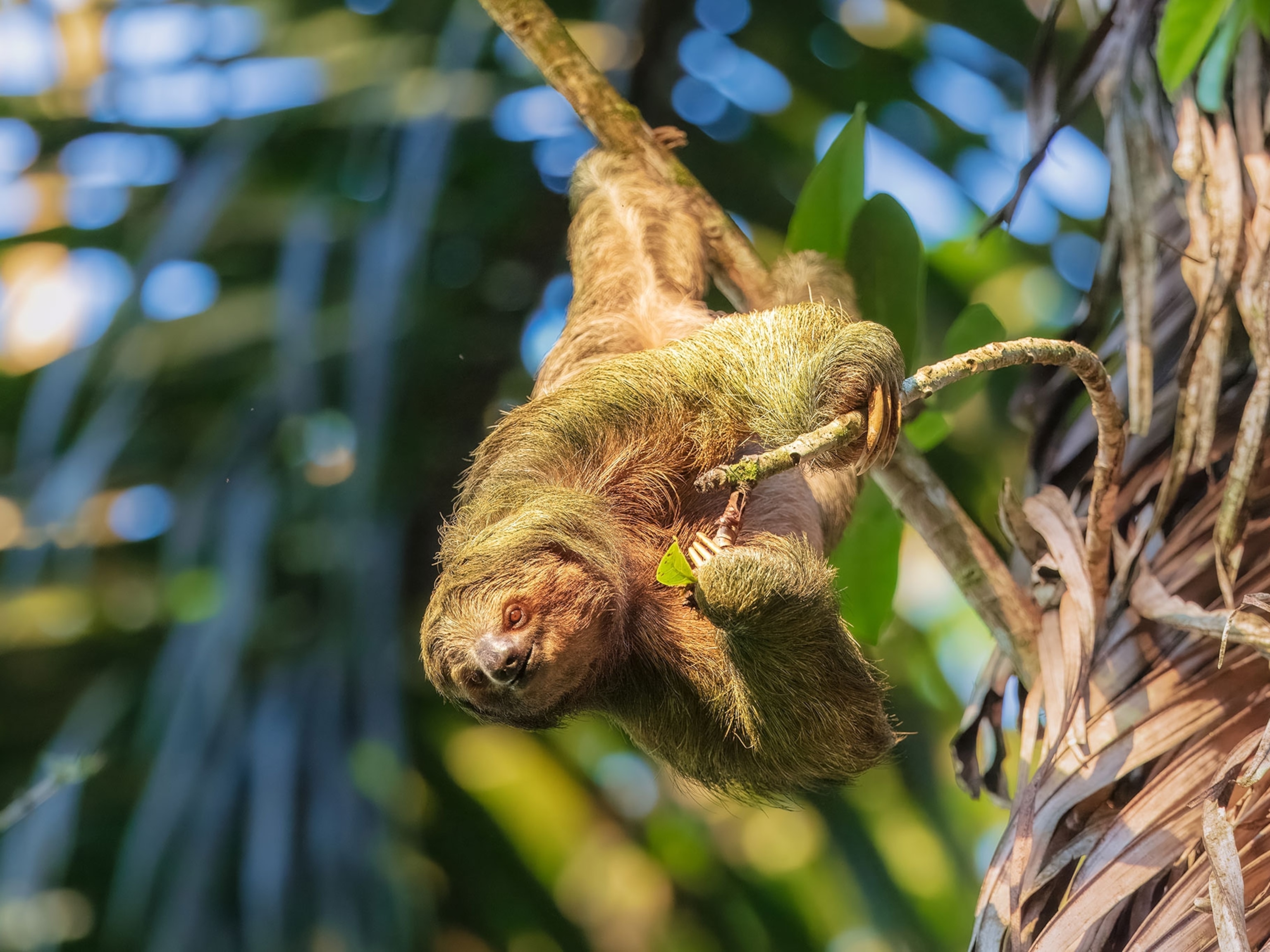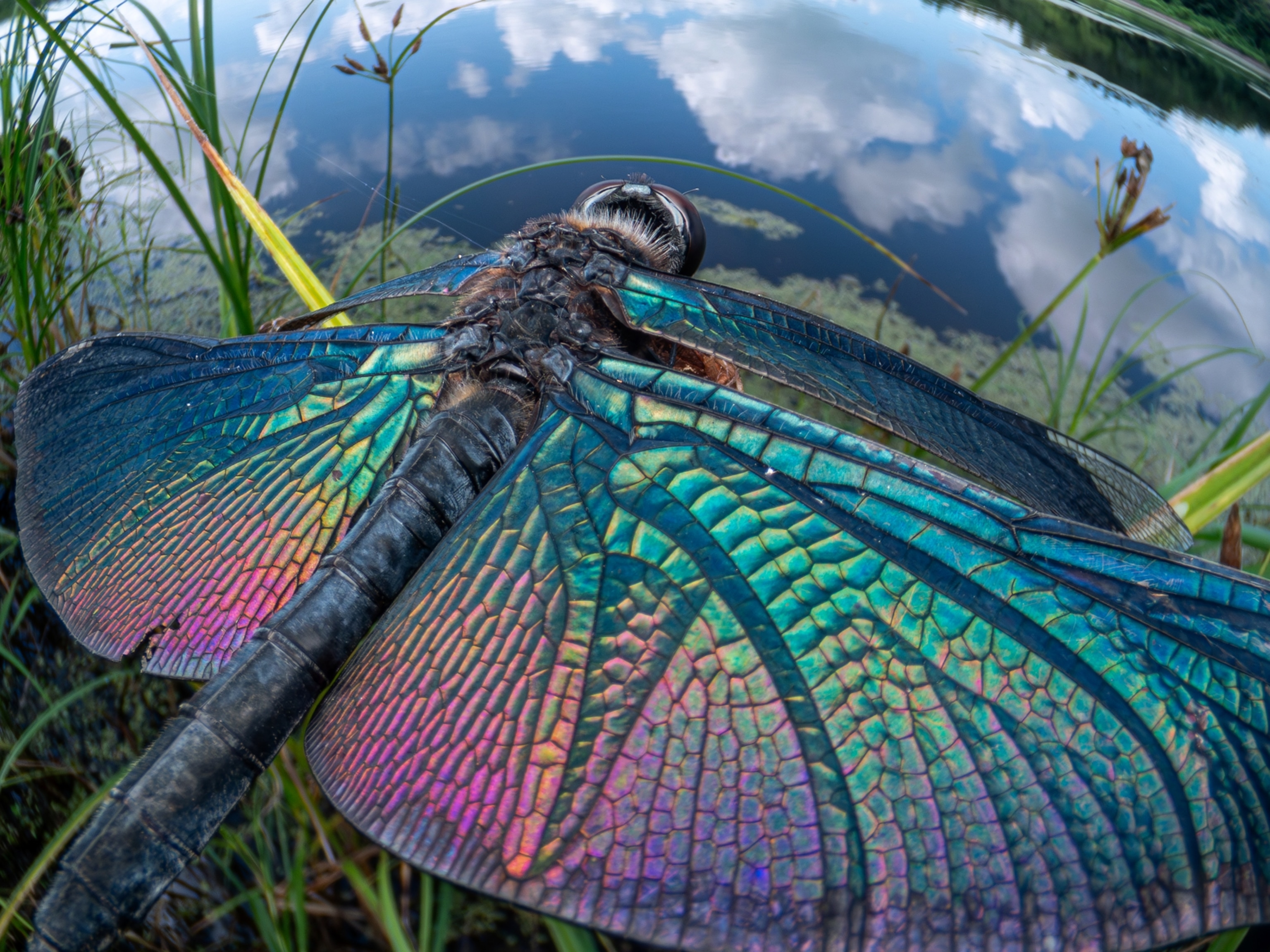
Bee Viruses Spread via Flower Pollen
Other pollinating insects also carry disease, study finds.
Viruses that could play a role in the recent decline in honeybee colonies may be spreading through flower pollen, new research finds.
What's more, a number of wild pollinators, such as bumblebees, yellowjackets, and wasps, can also become infected with viruses in the pollen.
In hives affected by colony collapse disorder—a phenomenon that surfaced in U.S. honeybee colonies in 2006—worker bees vanish en masse. Some studies have suggested that Israeli acute paralysis virus (IAPV), first identified in 2002, may be contributing to the bees' demise.
Scientists knew that several viruses that infect honeybee colonies are transmitted from one bee to another within the hive through the bugs' saliva or from an infected queen to her eggs.
But how the viruses moved from hive to hive was relatively unknown, said study leader Diana Cox-Foster, an entomologist at Pennsylvania State University.
"People suspected the viruses were being transmitted by bees visiting other colonies, but no one really knew there was evidence for the virus moving into other [insect] species," she said.
Contaminated Pollen Infecting Bees
Bees collect nectar to make into honey and to make "bee bread"—pollen packed by workers into tiny balls with a bit of nectar added.
(See related pictures: "Rare Bees Make Flower-Mud 'Sandwiches.'")
When Cox-Foster's team collected university-owned honeybees as the insects were harvesting pollen, they found that some bees were healthy but their pollen loads were contaminated. This indicated that at least one type of virus—deformed wing virus, another fatal bee disease—was spreading from the pollen to the bees, and not always the other way around.
In a separate experiment, the team collected and examined wild bumblebees and wasps and discovered molecular evidence of viruses that can infect honeybees.
When bees from a healthy hive visited the same flowers previously visited by sick bumblebees, the colony contracted the virus within a week, the team found.
Cox-Foster noted that bee viruses in general don't have to be lethal: "It's sort of like the common cold. If you're healthy, you may not catch the cold your neighbors have. We need to ask why the bees are more susceptible to these viruses."
For instance, other stressors, such as pesticides and a lack of good nutrition, may be behind the bees' lack of resistance, she said.
Other Pollinators Not a Solution
The research may suggest that as honeybees continue to decline, turning to other species for pollinating crops in the U.S. is not the best alternative.
(Related: "Bees Like It Hot: Pollinators Prefer Warm Flowers, Study Reveals.")
Bee pollination accounts for $15 billion in added crop value, particularly for specialty crops such as almonds and other nuts, berries, fruits, and vegetables, according to the U.S. Department of Agriculture.
"People thought, The honeybees are disappearing, let's just use a different species" for pollinating plants, Cox-Foster said.
But the new research shows that the viruses can spread to other pollinators—"and they're likely exposed to the same stressors."
The bee-virus study appeared in the December 22 issue of the journal PLoS ONE.





